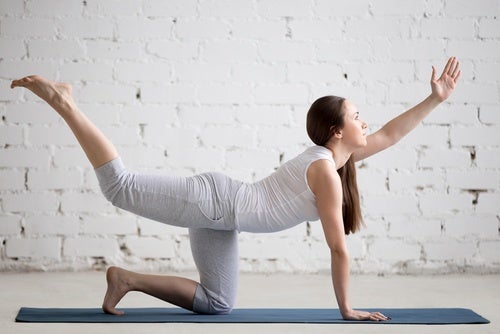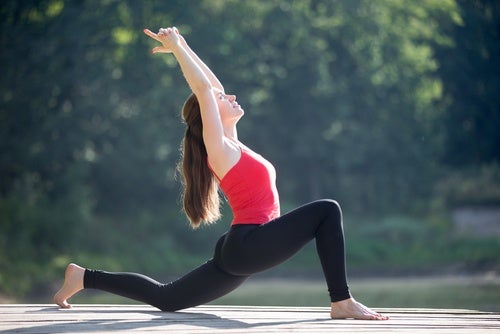
The lower back or lower back is a sensitive area of the body that can be affected by damage to the hamstrings, weakness of the abdominal muscles, injuries and disc hernias.
Although a good posture and the regular practice of exercise can contribute to strengthening it, many people are neglected and develop ailments that affect their quality of life.
Most of the time it is stressed due to a physical overexertion, a poorly performed movement or to spend too much time sitting in front of the computer.
Because of this, it is essential to avoid a sedentary lifestyle, but also moderate physical activity and heavy work during the day.
Fortunately, you can also practice some special exercises to strengthen your muscles and increase resistance.
Here we share in detail the 6 best so you can start doing them in the comfort of your home or office.
Discover them!
1. Opposite arm and leg on knees

This simple exercise decreases the tension in the lower back and, incidentally, strengthens the abdominal muscles.
How to do it?
- Stand on four supports, with palms on the floor and knees bent.
- Lift and stretch the right arm and left leg until they are parallel to the ground.
- Hold the posture for 4 seconds and slowly return to the starting position.
- Repeat the activity with the arm and the opposite leg.
- Perform 3 sets of 10 repetitions per side.
2. Arm and leg opposite on the belly
This activity is similar to the previous one, with the difference that this time you will keep the belly on the ground as support, instead of the knees.
How to do it?
- Lie face down on an exercise mat, with your arms extended above your head and your palms on the floor.
- Simultaneously, raise the right arm and left leg to a comfortable height.
- Hold the position for a couple of seconds and slowly return to the initial position.
- Repeat with the other side and complete 10 repetitions for each one.
- Perform 3 or 4 series per session.
3. Leg Lift

The leg lift exercises not only strengthen the thighs and buttocks but also work the abdominal and lumbar area.
How to do it?
- Lie on your back, bend your right leg and lift your left leg with a gentle movement.
- Take the raised leg with both hands behind the knee and try to hold the position for 30 seconds.
- Change sides and repeat the same action.
- Complete 3 series with each leg.
4. Pelvic elevation
The elevation of the pelvis or bridge is an exercise that works the muscles of the lumbar and abdominal area.
The key to getting good results with your practice is to contract the abdomen every time the movement is made.
How to do it?
- Lie on your back on a mat, bend your knees and support your feet on the floor.
- Keep your hands at the sides of the body and, keeping your back straight, raise the buttocks off the floor and lift the pelvis.
- Hold the posture for 10 seconds, rest and repeat it 10 times.
5. Hip flexion

Although this exercise is designed to tone the hip , it is proven that it also has a positive effect on discomfort in the lower back.
How to do it?
- Put the left foot in front of the other, with the knee bent forward while stretching the right leg.
- Bend the trunk forward so that the left knee makes contact with the axillary fold and return to the initial position.
- Perform the same movement with each leg alternately, until completing 10 repetitions.
6. Lumbar and oblique
The objective of these movements is to strengthen and reaffirm the muscles of the lumbar and obliques of the waist.
How to do it?
- For lower back, lie on the floor with arms extended forward and raise the trunk, at least 8 times.
- Rest and repeat it 3 more times.
- For the obliques, lie on your side, hold your feet with the sofa and raise your body laterally.
- Perform 3 sets of 10 repetitions per side.
Final recommendations …
As a complement to the regular practice of these exercises remember to avoid sitting for a long time, even less if it is in soft and deep chairs.
Try to stand up and stretch your joints, at least every two hours.
Also, avoid lifting weights that imply the forward lean of the body, especially if you have a history of injury
